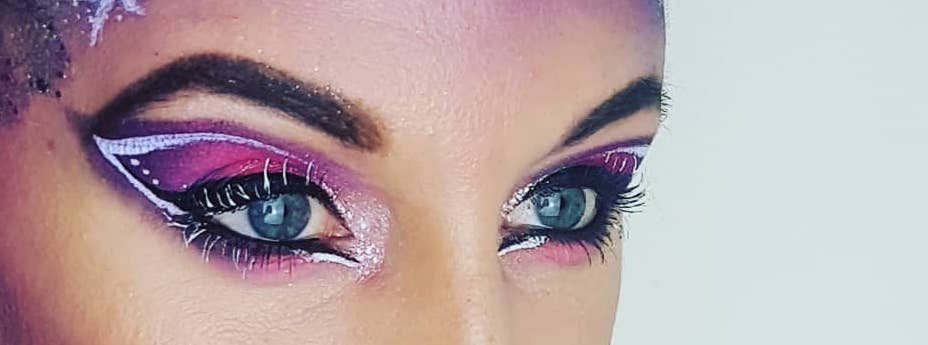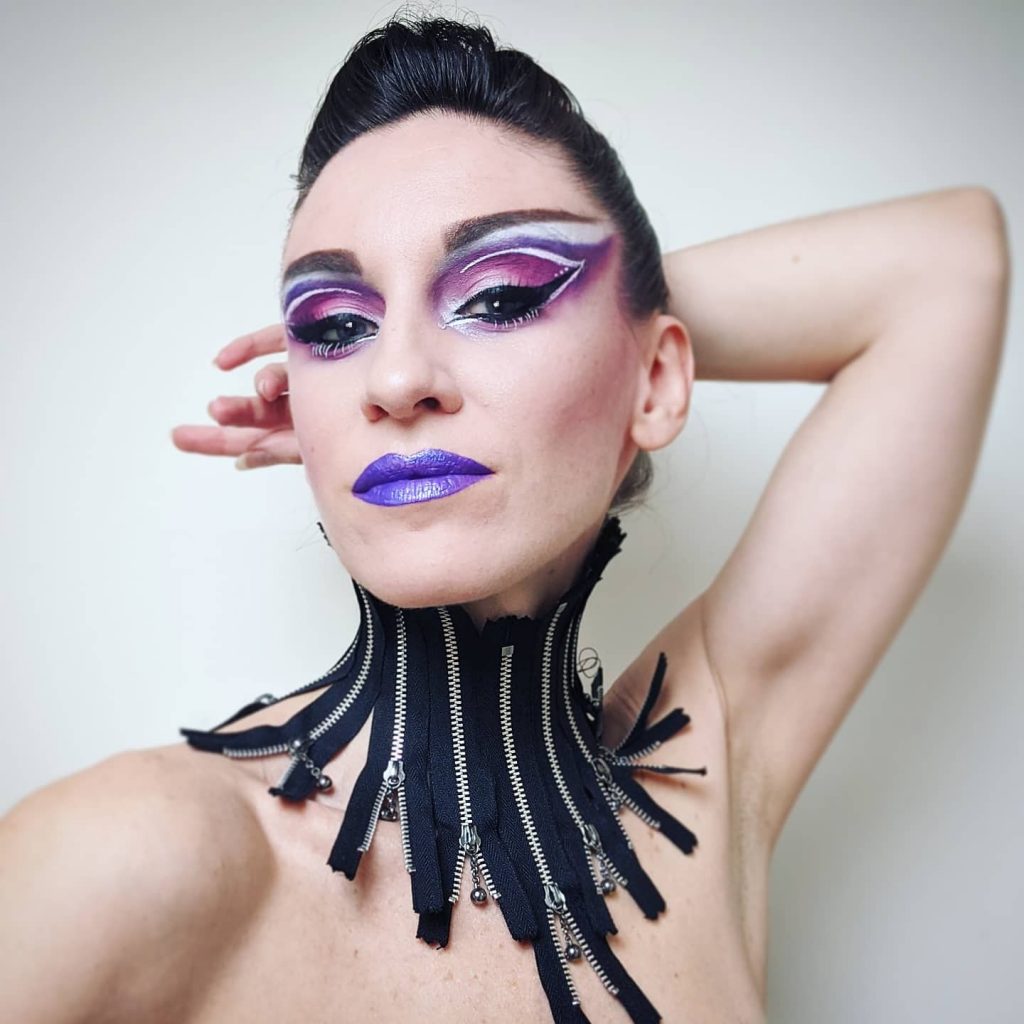
I’m passionate about the Goth scene! I love the music, clothing, dancing, and community. In this second post in the series, I’ll shed some further light on this part of my life by answering some more frequently asked questions.
In part 1 of my “Introduction to Goth” series, I answered some general questions I’ve encountered about the Goth scene and shared some of my personal experiences. The response from you, dear readers, was really lovely and encouraging, and so I’m following up here with part 2, where we’ll dive a little deeper and explore some additional topics.
For those who haven’t seen part one or who are new here (welcome!), I’ve been hooked on the “alternative” side of life since the early 2000s and have been an active participant in the Goth scene ever since. I also have a PhD in Cultural Geography focussing on the Goth scene in the UK, USA, and Japan, so I’m often asked questions about my culture.
As a disclaimer, I’m writing this article from a personal perspective and not attempting to represent everyone’s experience. Hopefully any fellow Goths reading will identify with some of the questions and answers, although I’m sure you will have different stories and different ways of explaining- do get in touch if you’d like to share!
(Trigger warning: towards the end of the post I touch on issues of abuse and racism)
To kick us off, I thought we’d start with a little quick-fire myth busting section:
Myth 1: Goths only wear black
Nope, as we’ve seen in part 1, there are different sub-genres within Goth and not all have an emphasis on wearing black. Some cybergoths love a bit of neon colour added in, plus dark red, purples, and silver are worn by even the most vampiric trad-Goth, too. Some of my friends also wear all white looks, and Pastel Goth is a stylistic genre in itself!

Goth in full technicolour!
Even the well-known trope of having long, black hair isn’t universal by any means. Personally, I’ve never dyed my hair black and I have several Goth friends with blonde hair, and many others with all the colours of the rainbow. There is a lot of black, yes, but more variety than you’d think.
Myth 2: Black lipstick and white foundation essential for a Goth makeup look
Not essential, no. The look of wearing white foundation and powder to give a deathly parlour comes partly from early Goth style influenced by black and white horror film and imagery of vampires and other undead Gothic tropes. While some Goths do choose to emphasise a pale complexion, I feel this is not a trend right now and is certainly not a necessity- it’s perfectly acceptable to be a Goth with any skin tone whatsoever.

THIS is also Goth- appropriate makeup!
I’d also caution against true black lipstick, as it can tend to make teeth look a little yellow (for me anyway!). I find blue-toned lipsticks in dark colours like a classic burgundy red, or actual blue/purple work well, or a more neutral taupe for cyber looks. Go with whatever you’re comfortable with and bol**cks to any apparent “rules”!
Myth 3: Goths never smile and take themselves very seriously
Goths may look pretty serious and scary from the outside, but in fact, for most Goths there is a knowing, self-deprecating humour lying just below this surface. We realise the absurdity of some of the hyperbole in our looks and the music and take great pleasure in this.
There are also Goth comedians such as Voltaire who combine stand-up and comedy songs in their live gigs, and comedy acts like The Gothsicles (“Straight up Otter Time” is a real dance floor banger, trust me!). I have personally participated in joyous giant konga lines weaving in and out of festival crowds, as well as the previously mentioned Goths in dinosaur outfits… yes, Goths are very serious individuals indeed!
Myth 4: Goths are Satanists
Despite the use of symbols such as pentagrams, inverted crosses, skulls, and bats etc., this isn’t necessarily linked with following the practice of Satanism or any other spirituality. There are Goths of all religions, plus agnostics and atheists, just like in other cultures.
Now we’ve got some myths quickly addressed, let’s move on to some more philosophical questions:
You talk about creativity being valued, but then why do Goths look like they’re dressed the same?
I think there are a couple of things going on with this question: firstly, from an outside perspective or “untrained eye”, it can look as though Goths are dressed the same, but an insider perspective will read the subtleties and can see the many different sub-genres of clothing I introduced previously and appreciate that there is individual expression. There are many different shades of black!
Another element here is an apparent conflict between a culture valuing originality and creativity, while still retaining a sense of cohesive group identity to be named as a definitive group. Academic, Paul Hodkinson, has written on this topic and authored the paper with my favourite title taken from an interview quote: “We’re all individuals but we’ve all got the same boots on!”.
there is creativity within an idiom here…
True, there are certain stylistic conventions and themes (e.g. fishnet fabric, the colour black, big boots etc.) that are often followed by Goths, and even certain clothing items that many of us the world over will have in our closets. There are Goth clothing brands like New Rock boots, Vollers corsets, Cyberdog rave wear (with a prominent logo), Alchemy Gothic jewellery and homewares, and of course, band merchandise like T-Shirts. Many Goths will own these items and wear them, but I’d say rarely within the same combination, plus there are other elements like piercings, tattoos, hair styles (and colour), makeup, as well as other things like dancing style that still work to mark our personal differences. In short, there is creativity within an idiom here.
Other theories in subcultural studies suggest that more freedom of dress style comes as one becomes more “established” within a scene. The logic goes that as you’re better known there is less pressure to demonstrate your group identity and so you can begin to push the “limits”. An individual may be less concerned about what people think of them as they become comfortable in their identity and feeling of belonging within a group. Anecdotally, I find some truth in this for me personally- I’ve certainly felt more confident and inspired to try different things over the years.
It can also be that for some the style is not the main attraction of the scene, so this is of lower importance to them. They are happy to wear a more simplistic look because that’s what they want to do, and that’s totally accepted.
Why do Goth clubs often have a dress code? Isn’t that very elitist?
This is an interesting question and it might seem strange or “exclusive”, but I’d say that these codes are there to protect us Goths rather than to exclude anyone genuinely wanting to enter the club and participate appropriately.
It’s a way for bouncers to easily refuse entry to those who appear to be “troublemakers” or there to simply “gorp at the freaks”. It’s not that you need to have spent £500 on your outfit or you’re not “cool” enough to come in, it’s about protecting a safe space for the community.
Why is this necessary? What kind of negative reactions do Goths get?
We wear our alternative identities on our flouncy/latex/spike-clad sleeves and are easily identified…
Sadly, there have been incidents of violence against Goths, and many people who I interviewed during my own research recounted stories of bullying, yelling, intimidation, and even being threatened at gunpoint. This may be for many reasons- some linked to the playing with norms of gender and sexuality (e.g. male presenting Goths in makeup and skirts assumed to be gay), others triggered by the visual presentation as “different” and therefore seen as something to pick on. We wear our alternative identities on our flouncy/latex/spike-clad sleeves and are easily identified as a potential target.
Not whinging here (our appearance is our choice after all), but I also think people should be able to look how they like and express themselves without fear of aggression or threat from others who dislike (or are threatened by) things outside of their norm. One very sad notable incident in the UK was where Goth, Sophie Lancaster, was beaten to death in a park in 2007 by teenage assailants who targeted her and her boyfriend because of their visual appearance and alternative style. So yes, Goths can certainly experience negative and even frightening reactions.
Are Goths into kink and BDSM?
This is a common assumption that I’ve personally come across a lot, largely when dating men from outside of the scene. The answer is: possibly, but not necessarily. There are certainly crossovers between the kink/BDSM and Goth scenes, but they also exist separately. For example, some of the clothing/accessories are common to both scenes, and some festish/BDSM clubs will play Goth music and some Goth clubs may have playrooms with equipment etc. Goth is also a culture accepting of different practices and lifestyles, so is certainly “kink friendly”, but interest in these practices is not a requirement or something that all Goths are into (or that ONLY Goths are into!).
I’ve usually been approached poorly around this with statements like: “you’re a Goth, you must be into [insert BDSM practice here]”, almost as if this bypasses some level of consent. Instead, a polite question asking a person about their preferences is the more appropriate way to navigate this. So the answer is: maybe- you’d have to ask the individual 🙂
Are people of colour welcome in the Goth scene?
This is a complex question and I can’t speak for the experience of Goths of colour, but I do think it’s important to think about this. Issues of race and anti-racism are very important to me (see here), so I’ve been doing some research and my thoughts on this so far:
If you’d have asked me this a few years ago, I’d say in theory, definitely yes. The cultural values are one of embracing difference and diversity, so I’d like to think anti-racism was also a majority attitude amongst Goths. I also wouldn’t want to be part of a culture where non-white people were excluded. More recently though, #blacklivesmatter movement has helped me develop a much more critical lens.
I can see why people of colour would feel excluded by the stereotypical imagery and beauty standards that have been venerated…
Sadly, there are going to be racist idiots in any group, and I’m sure the Goth scene isn’t immune. Beyond overt racism though, I can see why people of colour would feel excluded by the stereotypical imagery and beauty standards that have been venerated in the history of the scene. Some of our early style and beauty heroes include the very pale skinned Siouxie Sioux, or the iconic vampiric figures like Vampira or Angelica Houston’s Morticia Addams. When Goth was developing in the 79s, 80s and 90s, this pale skin was a rebellion against the popularity of blonde, tanned, Barbie doll beauty standards popular in “mainstream” culture. It was an act of “resistance” in itself . But looking at this critically, it can be clearly exclusionary to non-white people.
To make matters worse, there has been little POC representation in subcultural media: for example, a popular Goth magazine in the US, Gothic Beauty, only featured a Goth of colour on the cover after 15 years (in 2015), plus the vast majority of our musicians and DJs are white and the scene largely white-Eurocentric. All the posters of Goth musicians I had on my walls growing up were of white musicians., something I didn’t really acknowledge as a young white person, but can now see as problematic.
When looking at some stereotypical Goth aesthetic values through a different cultural lens, they have different associations and meanings. I read an interesting account by Beauty Editor of Styist magazine and Goth of colour, who described her frustration of emulating the makeup looks of her white Goth friends, as for her, the heavy black kohl eyeliner for her was associated with classic Indian glamour look from Bollywood films. Instead she experimented with brightly coloured eyeshadows and shocking white nail varnish to create a contrast to her skin tone and for her, express the desired “alternative” image.
Other accounts from African American Goths I’ve read describe being called “coconut” for their interest in Goth music and stepping outside of their “expected” genre of Rap, R&B and Hip-Hop: they must be trying to emulate white people if interested in Goth.
In fact, there’s lots of evidence of Goth referencing non-white elements, not least the origins of Rock music (and therefore Goth) coming from African American artform of Blues. An article by African American writer Shanna Collins, discusses the history of popular symbols used in Goth like snakes, the ankh, skulls, and bones that have been appropriated from African, Caribbean, and indigenous cultures. Furthermore, an article in Vice discusses how many parts of African American experience can be described as “Gothic”, concluding that: “the African Diaspora’s history of enslavement, colonialism, trauma, and search for belonging are inherently Gothic themes”. It’s certainly helpful and imporntat to recognise these deeper origins and symbolic meanings alongside those more familiar to us.
Happily, I now see a growing emphasis on non-white voices within the scene. There have been several helpful lists of resources to find out more about black-owned Goth brands, musicians, and blogs to help us all seek these out (e.g. lists from bloggers Sew Goth, and Stephano). I’m continually processing and thinking through these issues, so will update when appropriate.
OK, I’d like to try it out- how can I get started in the Goth scene?
I’d say listen to the many sub-genres within this pretty diverse genre of music and find which styles and bands you’re most interested in- you’ll be pretty bored going out if you really dislike the music, and there are many other music scenes to explore that might be a better fit.
When exploring the style, I’d say think about what is most “you”- the idea is to express yourself and feel awesome! That being said, it’s fun to explore different sides of your personality, so feel free to experiment and find where you feel comfortable.
when venturing out to a club it’s important to remember that consent is a very important thing…
When it comes to getting to know other Goths, there are, of course, many online opportunities, but when venturing out to a club it’s important to remember that consent is a very important thing- just because people are wearing latex or sexy outfits doesn’t mean they want to be approached and certainly not touched. This is clothing people wear for themselves and not necessarily with the object of picking up. A respectful approach is always advised.
I’d say also try asking people questions to learn more and build out your taste- I love asking the DJ about a great song they’ve played that I’ve not heard before, and talking with friends about the latest album releases, gigs coming up, how their work is going, what they’ve been cooking… it’s almost like Goths are just like everyone else, too 😉
There’s still so much to cover, but I’ll leave it there for now. Please let me know if you have any questions about Goth culture you’d like to ask. I’d love to attempt to address these or share other resources to help out, so get in touch on social media, via message on here, or comment below 🙂
Thanks for reading 🙂 Hit Follow to receive brief notes letting you know that I’ve posted a new article, and in the meantime, check out the Instagram and YouTube channels for more (Un)Popular content!